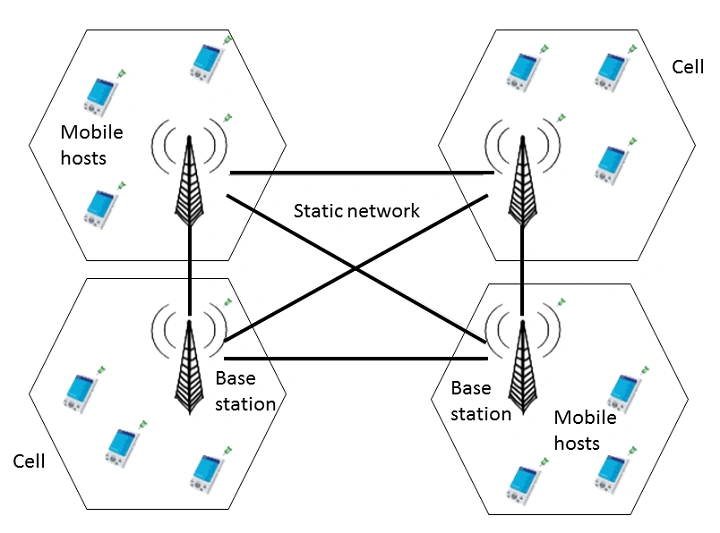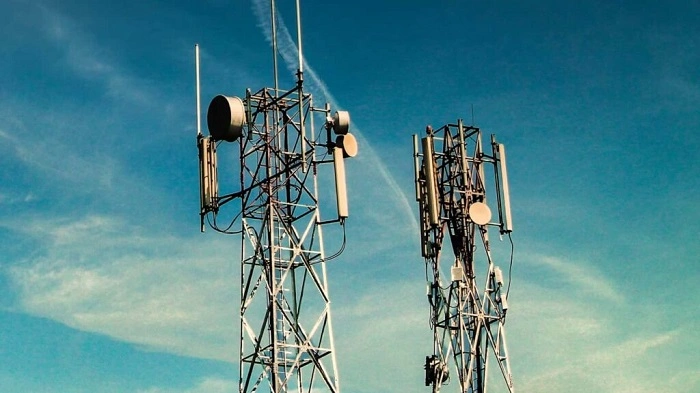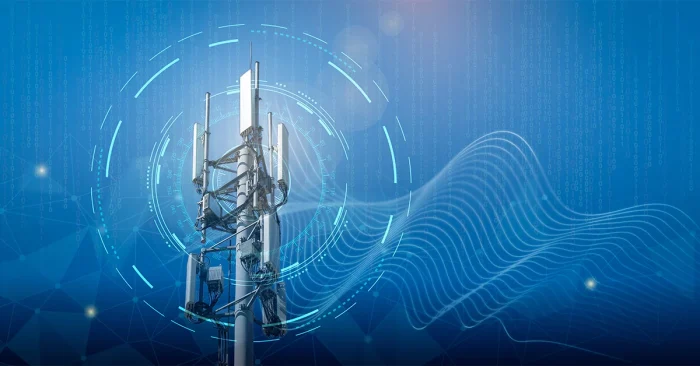What is a cellular network, and why is it so central to modern life? Every time you make a call, send a text, or stream a video, you’re relying on a cellular network to connect you. This article explores how these networks are built, how they work, and why they matter—from the earliest voice networks to today’s blazing-fast 5G era.
By the end, you’ll have a comprehensive understanding of:
- The basics of cellular network technology
- Different generations (2G, 3G, 4G, 5G) and their uses
- Network architecture and components
- How signals reach your mobile device
- How to pick the best carrier and avoid dropped calls
- Future trends driving the next wave of mobile connectivity
This guide is perfect for anyone who uses a smartphone and that’s just about everyone. Let’s dive in!
What Is a Cellular Network?
A cellular network is a communication network where the coverage area is divided into small regions called “cells.” Each cell is served by its own antenna and base station connected to the broader network. When you use a mobile device, it connects to the nearest base station, and as you move, your device hands off to the next station. This architecture maximizes efficiency and enables millions of simultaneous connections.
Key Components
- Mobile Device: The smartphone or tablet you hold.
- Cell Towers (Base Stations): The antennas connecting your device to the network.
- Core Network: Switches, routers, and servers that manage connections and route calls or data.
- Backhaul Network: Fiber or microwave links that connect base stations to the core network.
Generations of Cellular Networks
2G (Second Generation)
- Launched in the early 1990s with standards like GSM and CDMA.
- Digital voice made calls clearer and enabled text messaging.
- Data speeds maxed out around 50 100 kbps enough for email but slow for today’s internet.
3G (Third Generation)
- Introduced in the early 2000s (UMTS, CDMA2000, EV-DO).
- Data speeds jumped to several hundred kbps or a few Mbps.
- Made mobile web browsing, video calls, and simple apps possible.
4G / LTE (Fourth Generation)
- Standardized around 2008-2010 with LTE and WiMAX.
- Data speeds reach 100 Mbps or more on smartphones.
- Powerhouse of today’s mobile internet HD video, fast streaming, cloud-based apps.
5G (Fifth Generation)
- Rolling out since 2019, with global expansion underway.
- Offers 1-10 Gbps speeds along with millisecond latency.
- Enables ultra-high quality video, cloud gaming, massive IoT, and new industrial possibilities.
How Cellular Networks Actually Work
Signal Transmission
- Mobile devices send and receive radio waves across licensed spectrum ranges (e.g., 600 MHz, 2.5 GHz).
- Base stations use these signals to communicate with your phone and surrounding network.
How Calls and Data Connect
- Registration: Your phone registers with the network upon switching it on.
- Handover: As you move, your phone “hands over” from one cell to the next.
- Routing: Calls are routed to the core network, then to other phones or the internet.
- Data Transfer: Internet access is streamed through the network, reaching services like websites or apps.
Understanding Network Architecture
- Radio Access Network (RAN): Includes base stations, antennas, and spectrum management.
- Backhaul: Connects the RAN to the Core Network using fiber, copper, or microwave links.
- Core Network: Handles user authentication, routing, billing, and internet connectivity.
- Applications Layer: The digital services (streaming, messaging, IoT) that run over the network.
Performance Drivers: Factors That Matter
- Spectrum Availability
Carriers with more and broader frequency bands (especially in lower bands like 600 MHz) have better coverage and indoor reception.
- Cell Tower Density
Urban areas have more towers for higher capacity; rural areas may rely on fewer, high-power sites.
- Backhaul Capacity
Without strong fiber connections to towers, data speeds and reliability can suffer.
- Network Congestion
Too many users on a single tower can cause slower data or more dropped calls.
- Advanced Technologies
LTE-Advanced and 5G features like carrier aggregation and Massive MIMO boost speed and capacity.
Comparing Major Cellular Network Generations
| Feature | 2G | 3G | 4G/LTE | 5G |
| Typical Speed | 50–100 kbps | Few Mbps | 100 Mbps – 1 Gbps | 1–10 Gbps |
| Latency | 150–300 ms | 100–200 ms | 30–70 ms | 1–10 ms |
| Key Uses | Voice, Text | Simple Browsing | Streaming, Apps | Ultra-HD Video, IoT, Cloud |
| Network Type | Circuit Switched | Packet Switched | All Packet Switched | Advanced Packet Switched |
Choosing the Right Cellular Network for You
When selecting a carrier, consider:
- Coverage Area
- Nationwide coverage: essential for commuters and long-distance travelers.
- Urban vs rural: Spectrum and tower density matter.
- Indoor penetration: Lower-band frequencies are better.
- Nationwide coverage: essential for commuters and long-distance travelers.
- Data Speeds and Performance
- LTE and 5G access—especially useful for streaming, cloud applications, or remote work.
- LTE and 5G access—especially useful for streaming, cloud applications, or remote work.
- Price and Plans
- Monthly vs prepaid: prepaid gives flexibility, monthly may offer savings for heavy users.
- Included data, text, and call bundles.
- Monthly vs prepaid: prepaid gives flexibility, monthly may offer savings for heavy users.
- Device Compatibility
- Does your phone support necessary LTE or 5G bands?
- Carrier-locked vs unlocked devices.
- Does your phone support necessary LTE or 5G bands?
- Customer Service
- Network reliability plus strong after-sales support makes a difference.
- Network reliability plus strong after-sales support makes a difference.
- Roaming and International Plans
- Great for travelers if the carrier supports local or international roaming efficiently.
Emerging Trends in Cellular Networks
5G Standalone vs Non-Standalone
- NSA (Non-Standalone) connects 5G to existing 4G infrastructure.
- SA (Standalone) is a pure 5G setup better low latency, new capabilities.
Edge Computing
Placing data processing closer to towers reduces delay for real-time tasks like gaming or factory automation.
Internet of Things (IoT)
Millions of low-power, connected devices rely on cellular tech to support them. LTE-M and NB-IoT are built for this.
Network Slicing
Promised by 5G virtual network partitions customized for specific use cases (e.g., healthcare vs autonomous vehicles).
Common Issues and Fixes
- Dropped Calls / No Service – Check for out-of-coverage zone, enable airplane mode reset, or update tower list manually.
- Slow Data – Check for network congestion, switch to Wi-Fi, switch to lower-frequency band if available.
- Battery Drain – Avoid weak signal zones, update phone software, or limit apps in the background.
The Future of Cellular Networks
- Widespread 5G coverage and device adoption by 2028.
- 6G research underway expects integration of AI, terahertz spectrum, and holographic communication.
- Expanded IoT ecosystems with billions of connected devices.
- Public safety networks, smart cities, autonomous vehicles, and industrial automation powered by cellular networks.
FAQ: All You Need to Know About Cellular Network
What is a cellular network?
A communication network divided into cells, each with a base station connecting users to the broader network.
Why are cell networks called cellular?
Because the coverage area is segmented into small cells, like a honeycomb.
What’s the fastest cellular network today?
Commercially, 5G offers the fastest speeds up to several Gigabits per second under ideal conditions.
Does home Wi-Fi replace cellular?
It helps indoors, but cellular is essential for mobility. Both work together seamlessly when supported.
A cellular network is the foundation for modern mobile connectivity carried on towers, routed through core systems, and delivered to billions of devices worldwide. Each generation 2G, 3G, 4G, 5G has transformed how we communicate, work, and experience the digital world.
Today, the shift to 5G heralds a massive leap forward, enabling applications from remote surgery to autonomous vehicles. Understanding how these networks work empowers you to make better choices whether you’re picking a carrier, troubleshooting dropped calls, or preparing for the next wave of innovation.



